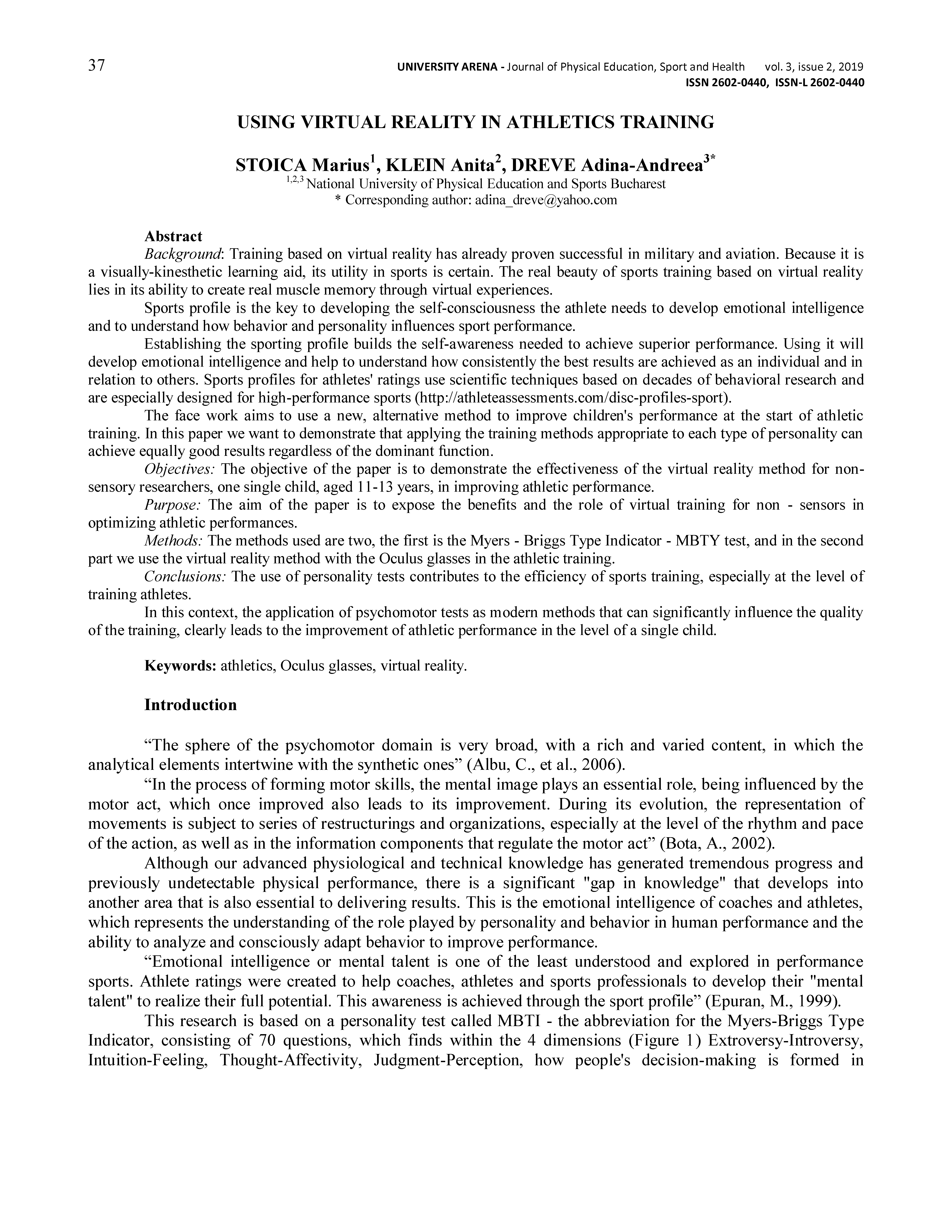USING VIRTUAL REALITY IN ATHLETICS TRAINING
DOI:
https://doi.org/10.62229/UaIII_2_19-6Keywords:
athletics, Oculus glasses, virtual realityAbstract
Background: Training based on virtual reality has already proven successful in military and aviation. Because it is a visually-kinesthetic learning aid, its utility in sports is certain. The real beauty of sports training based on virtual reality lies in its ability to create real muscle memory through virtual experiences. Sports profile is the key to developing the self-consciousness the athlete needs to develop emotional intelligence and to understand how behavior and personality influences sport performance. Establishing the sporting profile builds the self-awareness needed to achieve superior performance. Using it will develop emotional intelligence and help to understand how consistently the best results are achieved as an individual and in relation to others. Sports profiles for athletes' ratings use scientific techniques based on decades of behavioral research and are especially designed for high-performance sports (http://athleteassessments.com/disc-profiles-sport).
The face work aims to use a new, alternative method to improve children's performance at the start of athletic training. In this paper we want to demonstrate that applying the training methods appropriate to each type of personality can achieve equally good results regardless of the dominant function.
Objectives: The objective of the paper is to demonstrate the effectiveness of the virtual reality method for non-sensory researchers, one single child, aged 11-13 years, in improving athletic performance.
Purpose: The aim of the paper is to expose the benefits and the role of virtual training for non - sensors in optimizing athletic performances.
Methods: The methods used are two, the first is the Myers - Briggs Type Indicator - MBTY test, and in the second part we use the virtual reality method with the Oculus glasses in the athletic training.
Conclusions: The use of personality tests contributes to the efficiency of sports training, especially at the level of training athletes.
In this context, the application of psychomotor tests as modern methods that can significantly influence the quality of the training, clearly leads to the improvement of athletic performance in the level of a single child.


